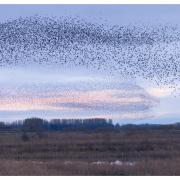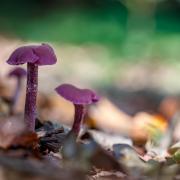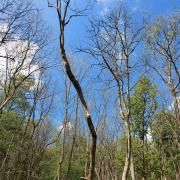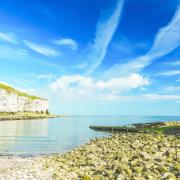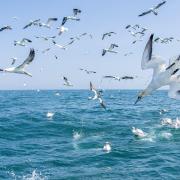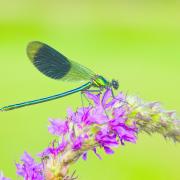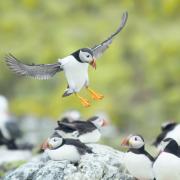Britain’s butterflies have experienced turbulant times in recent years with dramatic effect, says Tom Marshall from the Yorkshire Nature Triangle

In recent years the status of butterflies across Britain has sometimes made for dismal reading. In 2011, Butterfly Conservation – the country’s leading butterfly and moth charity – suggested a decline of nearly three-quarters in species abundance over 10 years, with many specialist species like the Duke of Burgundy and small pearl-bordered fritillary being particularly hard hit.
The cause for these declines includes changes in habitat type, development leading to losses of ‘wild’ land and an increase in intensive agriculture reducing the diversity of plant species from which butterflies drink nectar. However in the last few years, weather has also played a new, more unpredictable role.
Successive cold winters and wet springs and summers saw breeding reduce dramatically. After some typically British summers, it was therefore a huge relief to welcome the warming rays of 2013 and 2014, with extended periods of hot, dry weather. This certainly helped bolster numbers of some of our most recognisable insects, adding to the quintessential advertiser’s summer picture of barbecues, picnics and butterflies on their nectar-finding missions among vibrant flowerbeds. As I write, this summer is also looking equally promising, with sightings including the orange-tip and brimstone, and summer species like peacocks, speckled woods and small tortoiseshells already providing splashes of colour.
In the long term – warm summers or not – the habitats and nectar-giving plants which are needed to support our butterflies every year must be secured for the future. Wildflower-rich grassland has all but disappeared from our countryside, with as many as nine out of ten historical meadows that were once bursting under clouds of butterflies now a memory of generations passed.

The same is true for many other habitats too that also play host to butterflies and other crucial pollinators like bees and moths. The devastating impacts of neonicotinoids and other pesticides on bees has been well documented of late, and butterflies also remain at risk from our use of chemicals in the wider landscape.
To address this crisis, the UK-wide Making Space for Nature report – led by Yorkshire Wildlife Trust’s president, Sir John Lawton, called for creating bigger, better areas for wildlife, which crucially, are also connected. That way if a change occurs in one area, butterflies can fly on to the next. In this scenario local extinctions can hopefully be avoided, as are dramatic population declines.
Here in Yorkshire, the local Wildlife Trust is already working towards that aim, beginning with restoration and careful management of almost 100 nature reserves which span across the county.
Butterflies are at the heart of many of the Trust’s reserves from the Ribble Valley to the west at Brae Pastures, popular with small skippers and the northern brown argus, to the north-east at Ellerburn Bank near Thorton-le-Dale where you can find dark green fritillary and marbled white butterflies. Careful habitat management using traditional methods including coppicing – rotational annual cutting to encourage stronger new growth – and conservation grazing with low numbers of livestock is enable a greater diversity of plants to grow provides a better food source for both caterpillars and butterflies.

Yorkshire Wildlife Trust is also leading on limestone grassland restoration in South Yorkshire, helping to increase the connectivity between sites and providing the corridor for butterflies to move along in times of change. Floodplain meadow creation and restoration work along the River Ouse near York also supports the same outcome, boosting butterfly numbers as well as other wildlife.
What to look out for
Yorkshire has an impressive 36 species of butterflies, with many easy to spot on a summer’s stroll. Each habitat attracts its own group of butterflies, which makes Yorkshire an excellent place for butterfly watching, as we are lucky to have a range of landscapes from peat bogs to coastal cliffs and woodlands to grassland meadows. For a good chance of spotting a large number of butterflies then Burton Leonard Limes Quarries Nature Reserve near Knaresborough is an exceptional location where during the late spring and summer green-veined whites, meadow browns, ringlets and speckled woods thrive. With a pair of binoculars, rare white-letter hairstreaks can also be occasionally found among the elm tree canopy.

Brockadale Nature Reserve near Pontefract is another top site, where dark green fritillaries and marbled whites cluster around the meadows in July. On a sunny day Wharram Quarry Nature Reserve near Malton sees small heath, common blue and dingy skipper butterflies among several others fluttering from flower to flower. For those in search of something special, a small colony of brown argus butterflies can also be found at North Cave Wetlands near Hull. The county’s remaining wildflower meadows also offer plenty of opportunities, with Staveley Nature Reserve’s and Kiplingcotes’ meadows both a visual delight in their own right, and hope to a number of easy to spot species.
Although there are a few exceptions to the rule, butterflies are largely restricted to day flying and their cousins the moths not until after dark. Despite popular belief, moths can also dazzle the eyes too with species like the pink and yellow elephant hawkmoth and tiger moth certainly giving butterflies a run for their money. One remarkable species is the continental hummingbird hawk moth which can visit our shores in good numbers in some years, impressing with its flying prowess which can easily be seen during the day on plants like lavender. w
For more information on great places to spot butterflies in Yorkshire or events where you can learn more about butterflies and moths visit ywt.org.uk or yorkshirenaturetriangle.org.uk
What you can do
Action to save our butterflies is not something that is limited to experts. There are plenty of things you can do to help encourage butterflies into your own bit of green space and in turn help boost local populations.
Simple tasks such as planting nectar-rich plants like lavender, which also provides stunning colour and scent to any patch of garden, can make a huge difference. Dead-heading plants that have already bloomed will also help encourage new flowers and therefore provide a nectar source for longer through the season. Leaving an unkempt corner of the garden with brambles will provide breeding habitat and feeding for caterpillars, or if you have a little more space then why not plant a wildflower meadow – you can even buy ready-to-roll wildflower meadows for just a few pounds per square metre. If space is tight then the planting of a buddleia or ‘butterfly bush’ will create an instant drop in diner for more than a dozen species in the tightest of gardens.












